Types of Japanese maples: 9 eye-catching options for your plot
Easy to care for and stunning to look at, there are many types of Japanese maples and a different variety to suit every backyard or garden

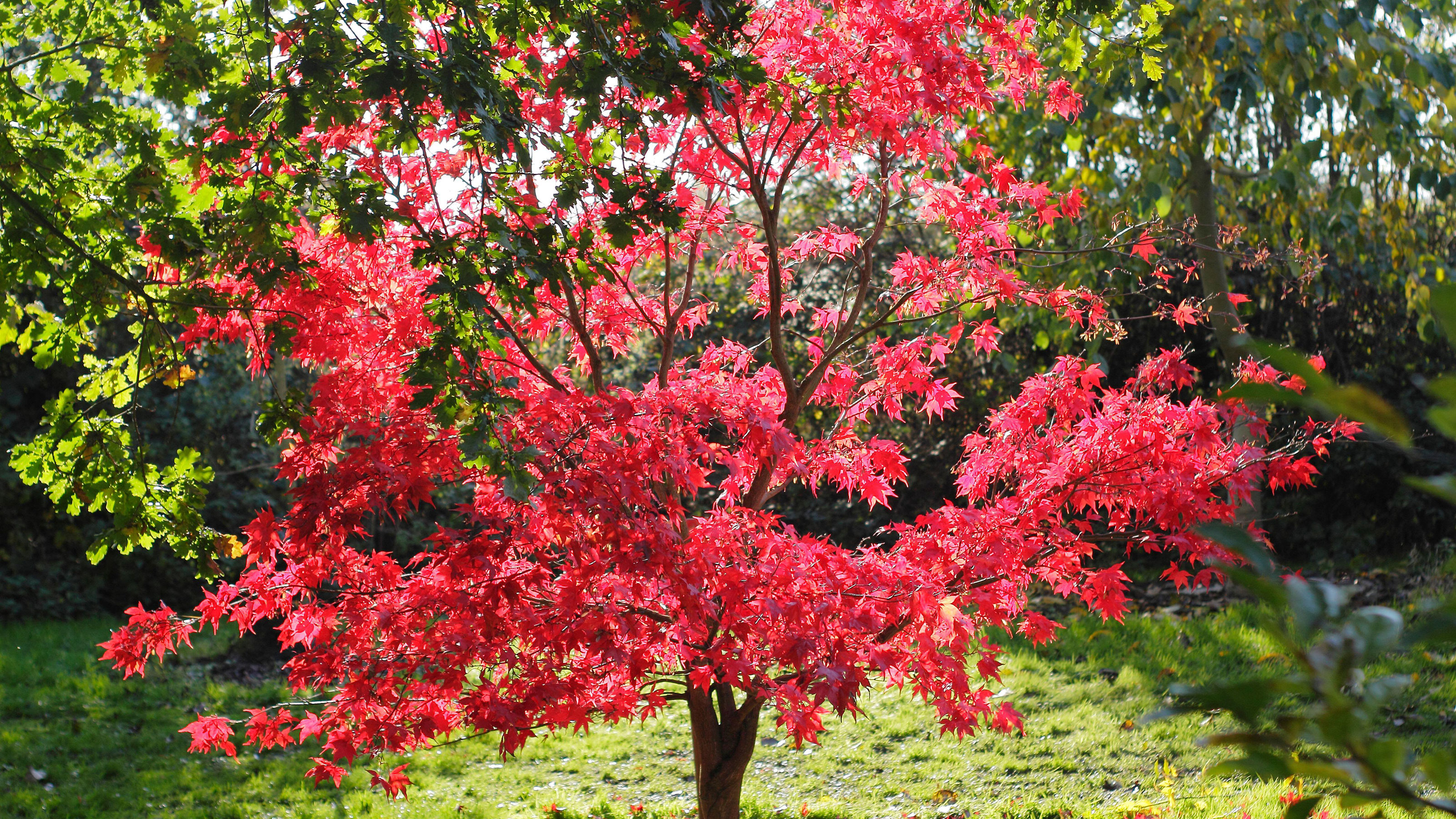
There are many different types of Japanese maples, also known as acers, with at least 1,000 varieties available in UK nurseries, and lots more in the USA.
It’s not surprising that they are so popular. As slow-growing, deciduous trees or shrubs, they fit into all-sized gardens, including smaller ones; they look good in spring and summer and then deliver a powerful pop of long-lasting fall color. In addition, Japanese maples have a shallow root system, so they can be planted close to buildings or walls without disrupting masonry or causing problems with underlying pipes.
These are naturally well-shaped trees. Vase-shaped varieties have branches which grow up and out, so they are narrow at the base and wider at the top of the tree. Weeping Japanese maples arch downwards, creating a dome of foliage. Compact or dwarf varieties will not grow much more than 3-6ft (1-1.8m) tall, and these are perfect for planting in a pot.
Most types of Japanese maples derive from three species: acer palmatum, acer japonica and acer shirasawanum. Acer palmatum is the biggest group with the most popular varieties. The leaves have pointed lobes which look a bit like a hand with fingers (palmatum is the latin word for ‘hand’).
Historically, Japanese maples grew in the hills and on forest fringes in Japan, Korea and Mongolia. This is why if you're keen to learn how to grow acers, it's worth remembering that many varieties will thrive in partial shade and like to grow in neutral to acid, moist yet free draining soil. Some tolerate full sun and others will grow in deeper shade, but this can affect the intensity of the color of the foliage.
'Japanese maples are a graceful shrub or tree which is most valued for its adaptability. They are as well suited to the peripheries as they are to some kind of central display,' say the experts at Squires Garden Centres. 'Once established, the Japanese maple is sure to become an integral part of your garden over its many years of life.'
Add year round colour with our favorite types of Japanese maples
For stunning color in your planting scheme, it's hard to beat the appeal of an acer. Whether you want a smaller variety for growing in a pot or a larger specimen as a focal point for your Japanese garden ideas, there are plenty of types of Japanese maples to choose from.
1. Acer atropurpureum ‘Bloodgood’
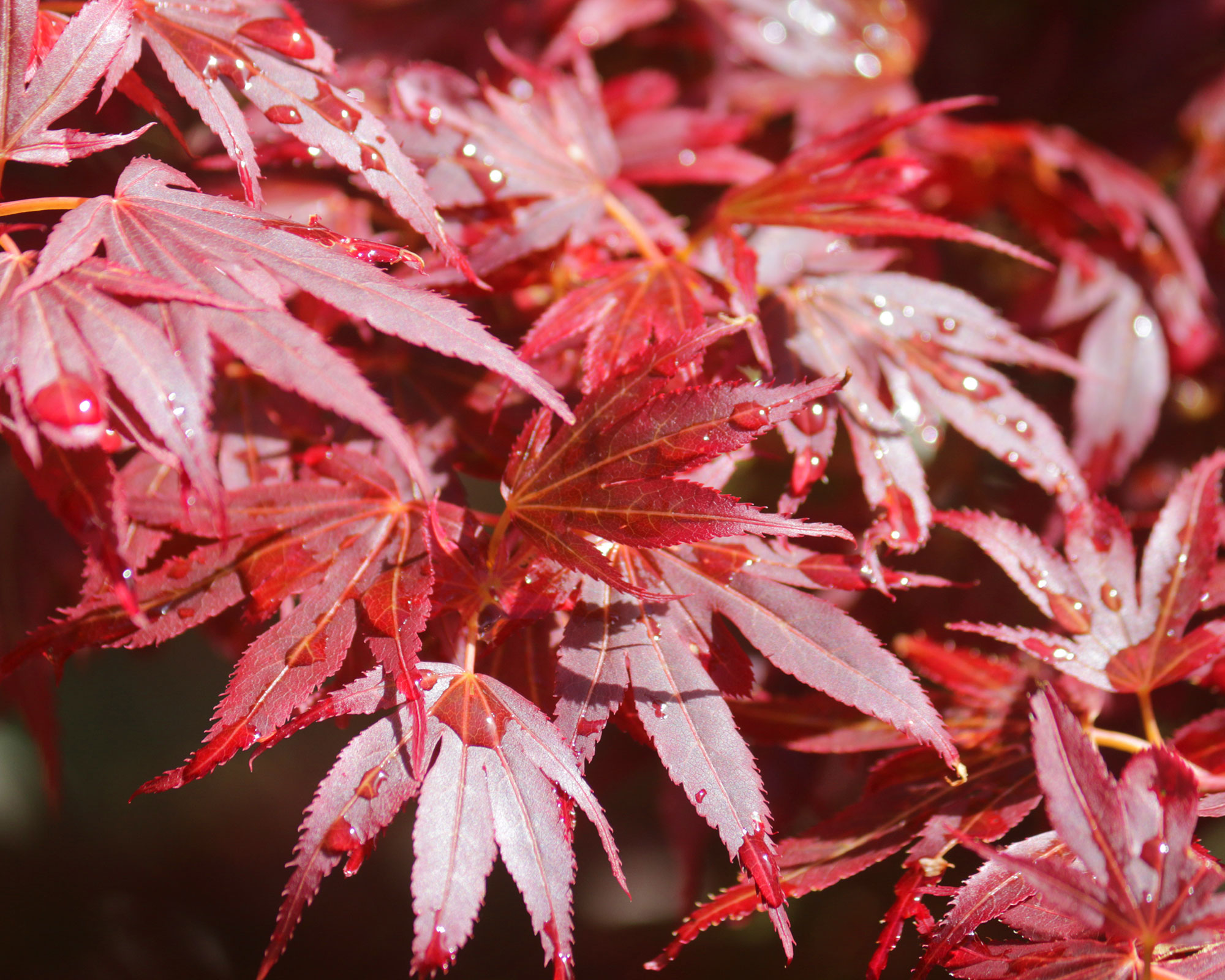
- Hardiness: USDA 5-8
- Height: 15-20ft (4.6-6m)
- Spread: 12-15ft (3.6-4.6m)
- Best for: a focal point in a contemporary garden
This is one of the most popular types of Japanese maples, and it’s not hard to understand why. The rich, plum-colored leaves of spring and summer turn to a vivid red in fall, making it a feature tree with maximum impact.
In spring, expect tiny purple-red flowers, followed by small red fruits, but it really is the dark-toned foliage which is the main attraction. This fast grower needs a sheltered spot, away from strong winds. The shape is tall and upright.
2. Acer palmatum ‘Osakazuki’
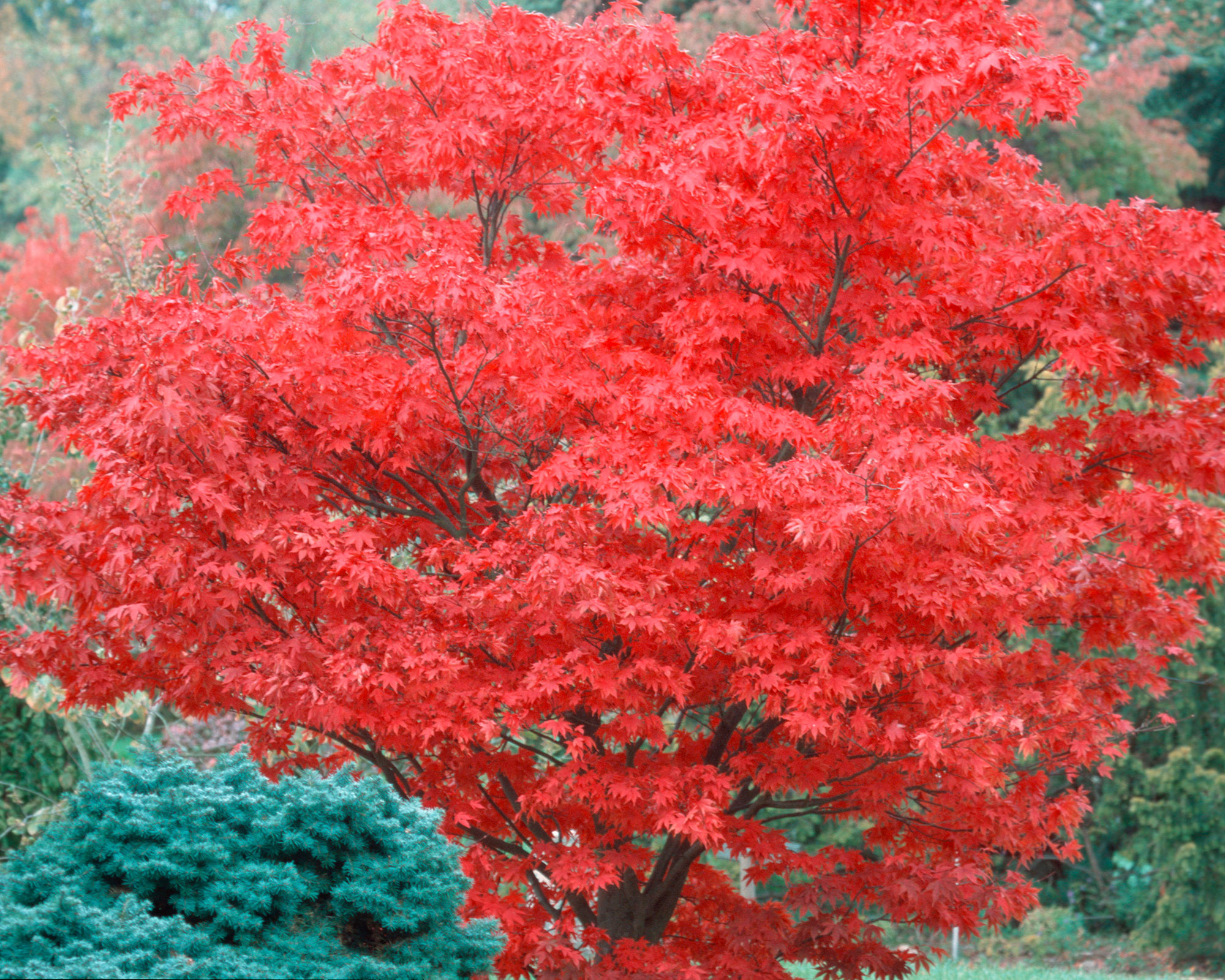
- Hardiness: USDA 5-8
- Height: 13ft (4m)
- Spread: 9.8ft (3m)
- Best for: long lasting fall color
Here’s a tree with a split personality: in spring and summer the large, beautifully shaped leaves are an attractive fresh green with a delicate red edging, but in fall, it explodes into a blaze of scarlet, making it one of the top trees with red leaves.
It is believed to have the longest lasting autumn color of any Japanese maple variety. Choose a sheltered position for this tree, out of full sun, yet somewhere it can be seen and fully appreciated.
It can be grown in a large pot, so long as it is regularly watered, or planted in a mixed border with moist well-drained soil.
3. Acer shirasawanum ‘Moonrise’
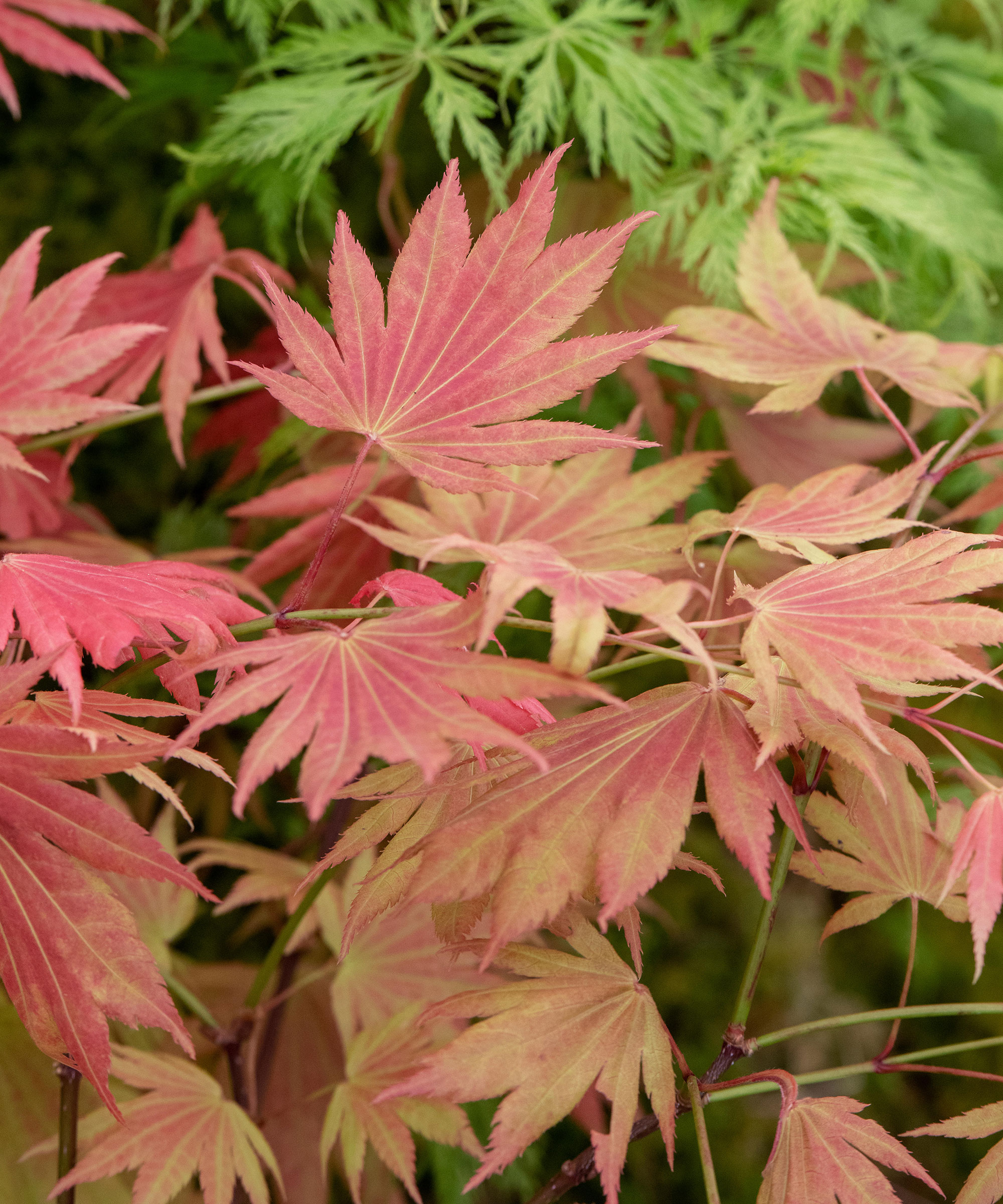
- Hardiness: USDA 5-8
- Height: 6.5ft (2m)
- Spread: 6.5ft (2m)
- Best for: brightening up a shady border
One of the best trees for small gardens, this is a US cultivar which was developed in Oregon in the 1980s. It is either a shrub or a small tree, which will form a rounded, compact shape and a seasonal kaleidoscope of colorful foliage.
The leaves grow red with intense green veins, and then mature to green for summer. Fall brings a beautiful burst of fiery oranges, peach and gold. There are winged red fruits in the summer months too.
It’s a tough and hardy plant, but it would still benefit from protection from cold wind and hot midday sun to avoid leaf scorch.
4. Acer palmatum ‘Sango-kaku’
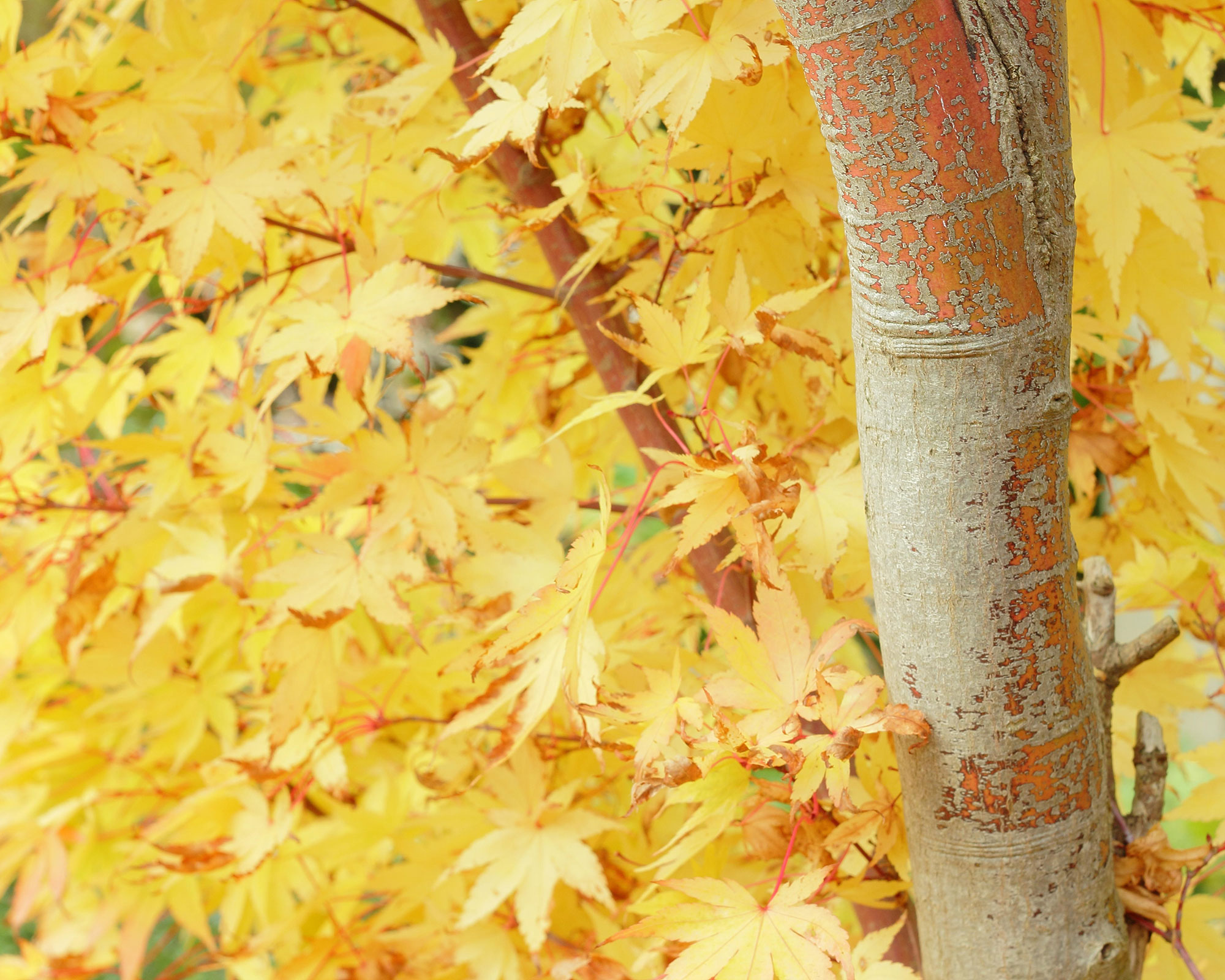
- Hardiness: USDA 5-8
- Height: 13-26ft (4-8m)
- Spread: up to 13ft (up to 4m)
- Best for: year-round interest with fabulous foliage and bark
Whether you're looking for the one of the best trees for front yards or a beautiful option for a backyard, Japanese maples are often a winning option thanks to their colorful leaves. This variety, however, scores bonus points for its striking coral or pinky-red stems, which come into their own once the leaves have fallen. It's known as a coral or red-barked maple for that reason.
The foliage is attractive: a blushed/yellow shade in spring (with little red flowers), lush green in summer and burnished gold in the fall.
It prefers a sheltered spot in full sun or part shade and avoid planting it in heavy, waterlogged soil. This is a medium sized, bushy tree. If you need something smaller, a good alternative with similar qualities would be ‘Winter Flame.’
5. Acer japonicum ‘Aconitifolium’
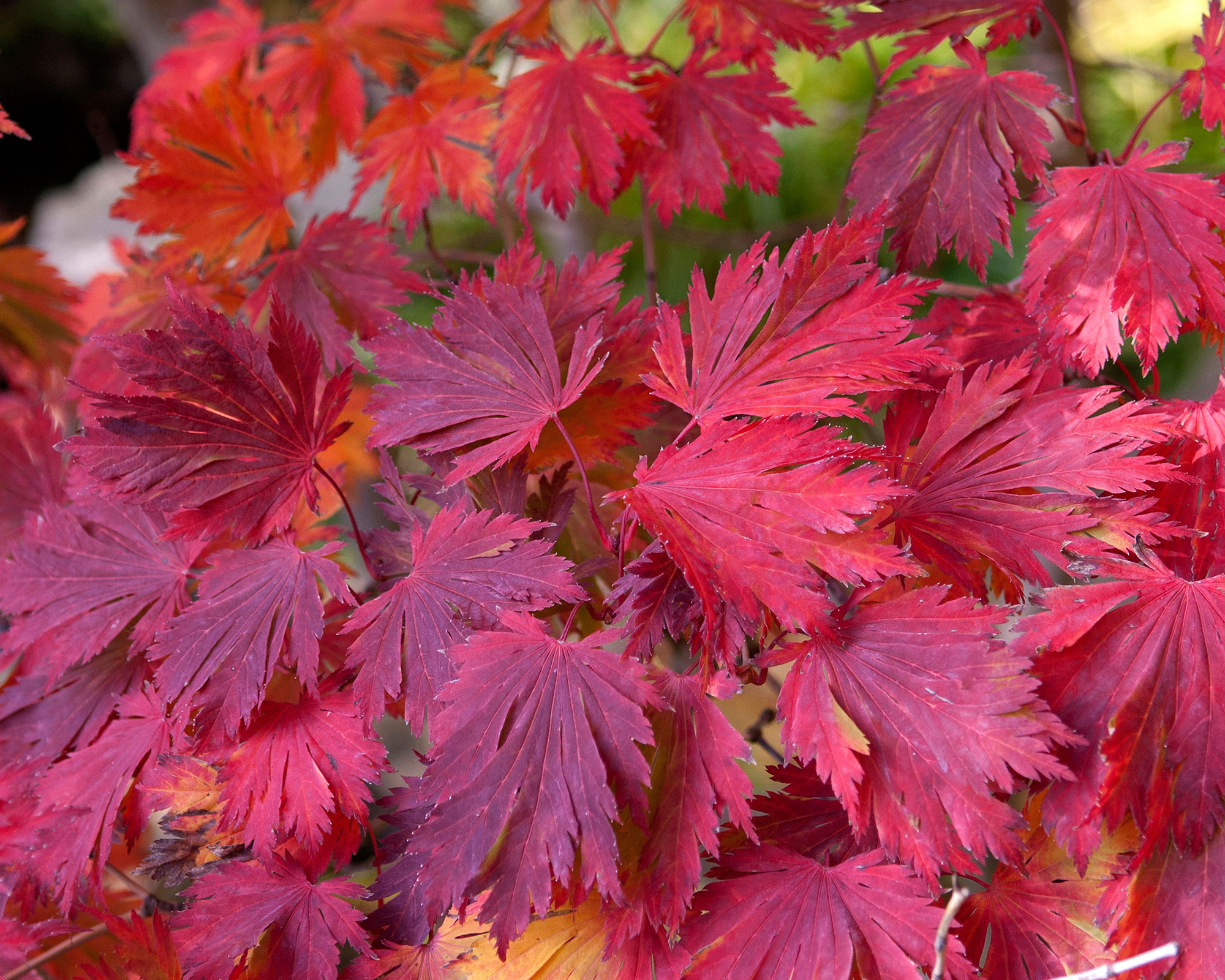
- Hardiness: USDA 5-8
- Height: 8-10ft (2.4-3m)
- Spread: 8-10ft (2.4-3m)
- Best for: brilliant red fall color
This used to be known as ‘Maiku Jaku’ which translates as ‘Dancing Peacock,’ and that is the perfect description for this showstopper of a plant. The ferny, lobed leaves on dense branches are bright green in spring but as the year passes they turn into brilliant tones of ruby, vermilion, wine and cherry red.
This one is best planted in moist, rich soil. It can cope with full sun, but in particularly hot states, such as the American south, the leaves may be prone to scorching. This is a stand-out tree which would make a great focal point or feature in a garden border.
6. Acer palmatum var. dissectum ‘Seiryu’
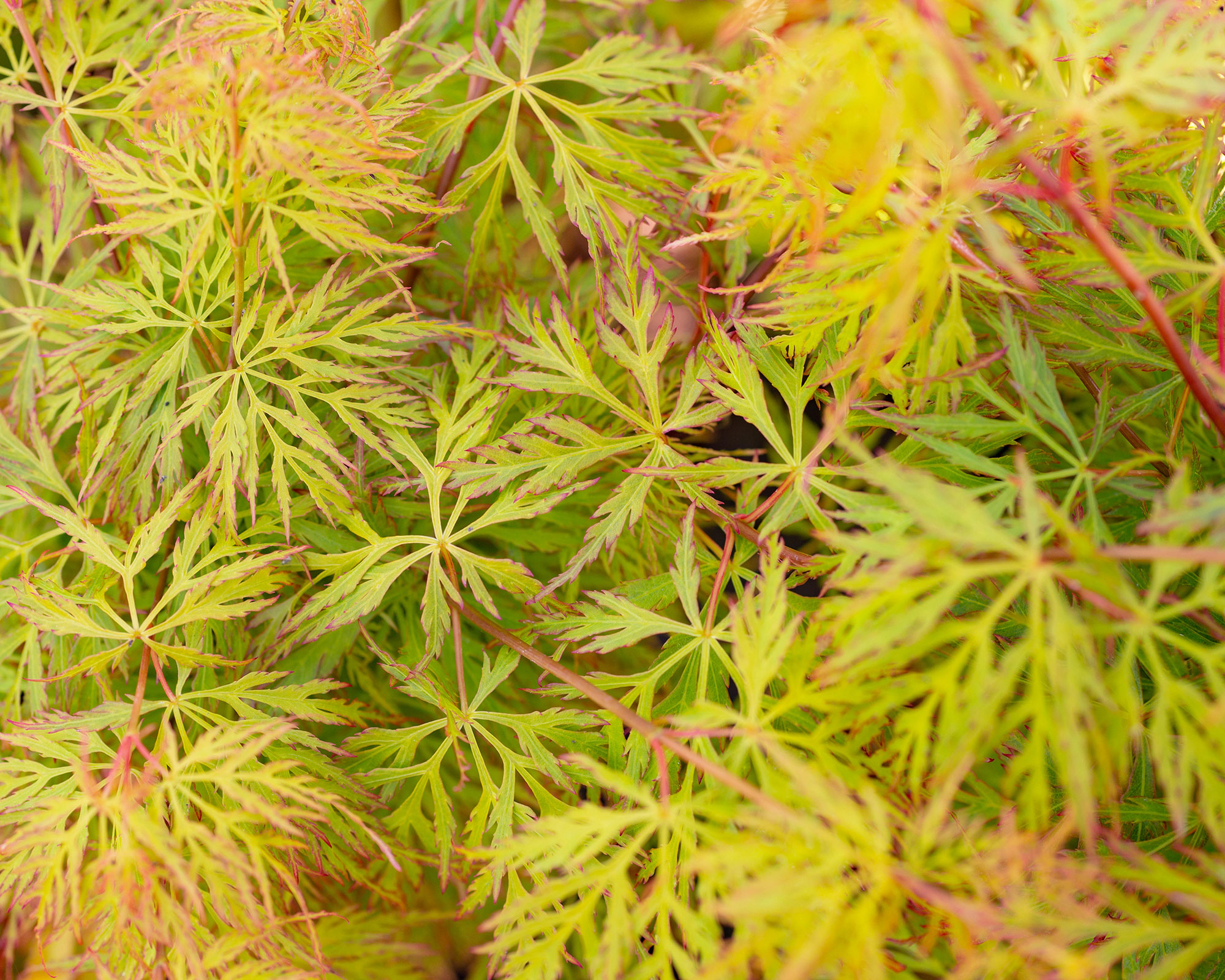
- Hardiness: USDA 5-8
- Height: 10-15ft (4m)
- Spread: 10-15ft (4m)
- Best for: golden fall color
The Japanese name means ‘Green Dragon’ and it’s sometimes called ‘Emerald Lace,’ both of which sum up the qualities of this tough yet delicate looking tree with its soft, ferny leaves in ever-changing colors.
It has a lovely shape, upright with multi stemmed branches. No pruning is needed, so it's a great low maintenance tree too. The leaves are firstly bright green, turning a more yellowy shade in summer, then creating a golden dome of yellows and bronzes in the fall.
It prefers moist, well-drained soil in part shade, but copes in full sun. This is a slow-grower, so it won’t overwhelm the garden in a hurry. As time goes on, the multi-stemmed branches get a little twisted, which adds to its architectural shape.
7. Acer palmatum ‘Crimson Queen’
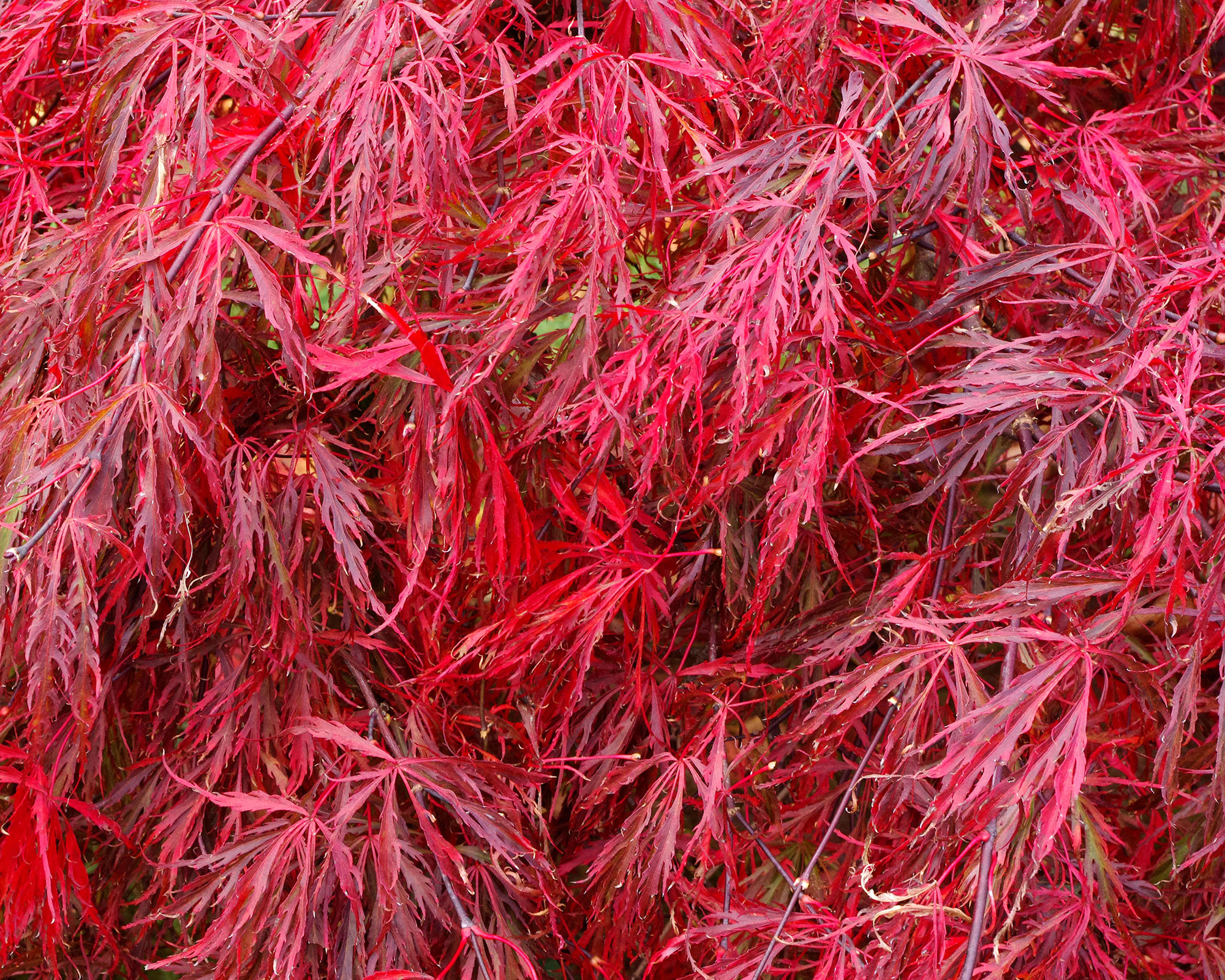
- Hardiness: USDA 5-8
- Height: 10ft (3m)
- Spread: 10ft (3m)
- Best for: planting near a pond
If you want a Japanese maple which is red and stays red, this is your tree. The leaves grow burgundy in spring brightening to crimson in the fall. This tree has weeping branches, so the silhouette looks like a dome of delicate, lacy foliage.
As a dwarf variety, it is one of the best trees to grow in pots, and it looks pretty placed by a garden pond, with the colors reflected in the water. It’s a slow grower, so it is very easy to manage. It prefers a sheltered position.
8. Acer palmatum ‘Little Princess’
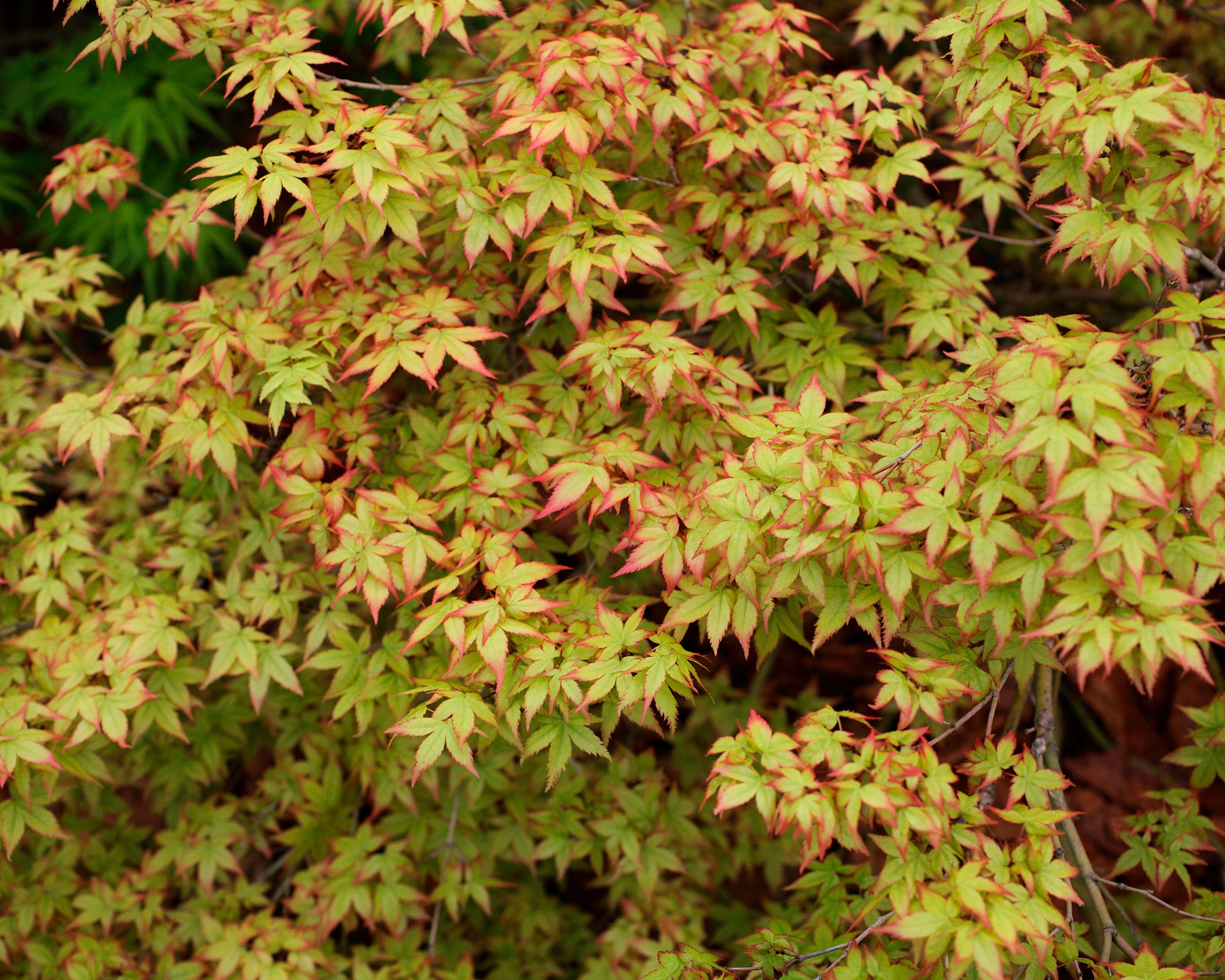
- Hardiness: USDA 6-9
- Height: 59in (1.5m)
- Spread: 59in (1.5m)
- Best for: small yards, balconies and rooftop gardens
The smallest Japanese maple on our list, this one is perfect for beginners, or people who only have access to a small space and want to give their patio gardening ideas an injection of color.
It’s no less gorgeous for that, and it will delight with its dense red tinged leaves in the spring which then turn to glowing golds and yellows in the fall.
Place it in partial shade for the most intense leaf colors. A slow grower, it will be happy in a container and it provides a long season of interest.
9. Acer palmatum ‘Shishigashira’
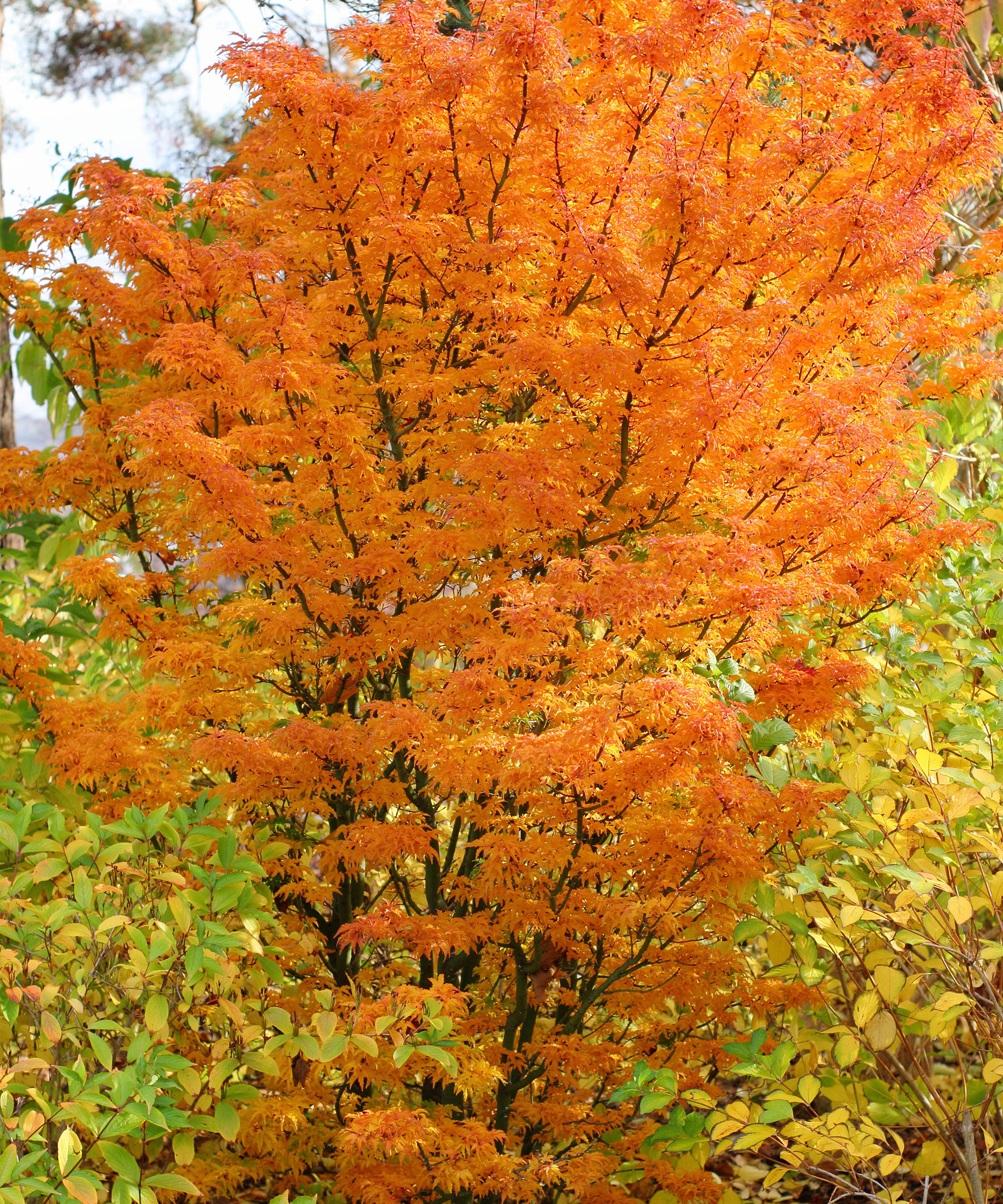
- Hardiness: USDA 5-9
- Height: up to 13ft (2.5-4m)
- Spread: 5-8ft (1.5-2.5m)
- Best for: a Zen-style garden
This tree is also known as the ‘lions head’ maple, which gives a good indication of its shape. With an upright habit, the close packed, crinkly leaves and bushy habit create the distinctively mop-headed effect.
Small, finely divided leaves are dark green in summer, developing into a soft, marmalade orange in the fall. The striking, architectural shape looks good in a large container, and these trees lend themselves to a modern Zen garden.
Grow them in neutral to acid soil types, with good drainage. They are very slow growers, taking up to 50 years to attain their full height.
What types of Japanese maples can be grown in pots?
You can grow some types of Japanese maples successfully in garden planters, but they will need a little more looking after than those grown in the ground, which can mainly be left to their own devices once they are established.
According to leading expert Neil Kenney, author of An Illustrated Guide to Japanese Maples for Garden Planting and Patio Pots (Larchfield Publications), available on Amazon, the red varieties are best suited to container gardening ideas.
He also advises planting the trees in a pot with a snug fit. 'Tight pots are better, and it’s better to avoid terracotta ones,' he says. Terracotta pots allow the soil to dry out more quickly. 'You will need to water container-grown Japanese maples on a regular basis, about a litre every other day in the summer, and keep to a regular routine, as the tree will adjust to this,' advises Neil.
Acers need extra watering and mulching in dry spells. 'Keep calm and keep them on an even keel,' is Neil’s best advice for successfully growing Japanese maples in containers.
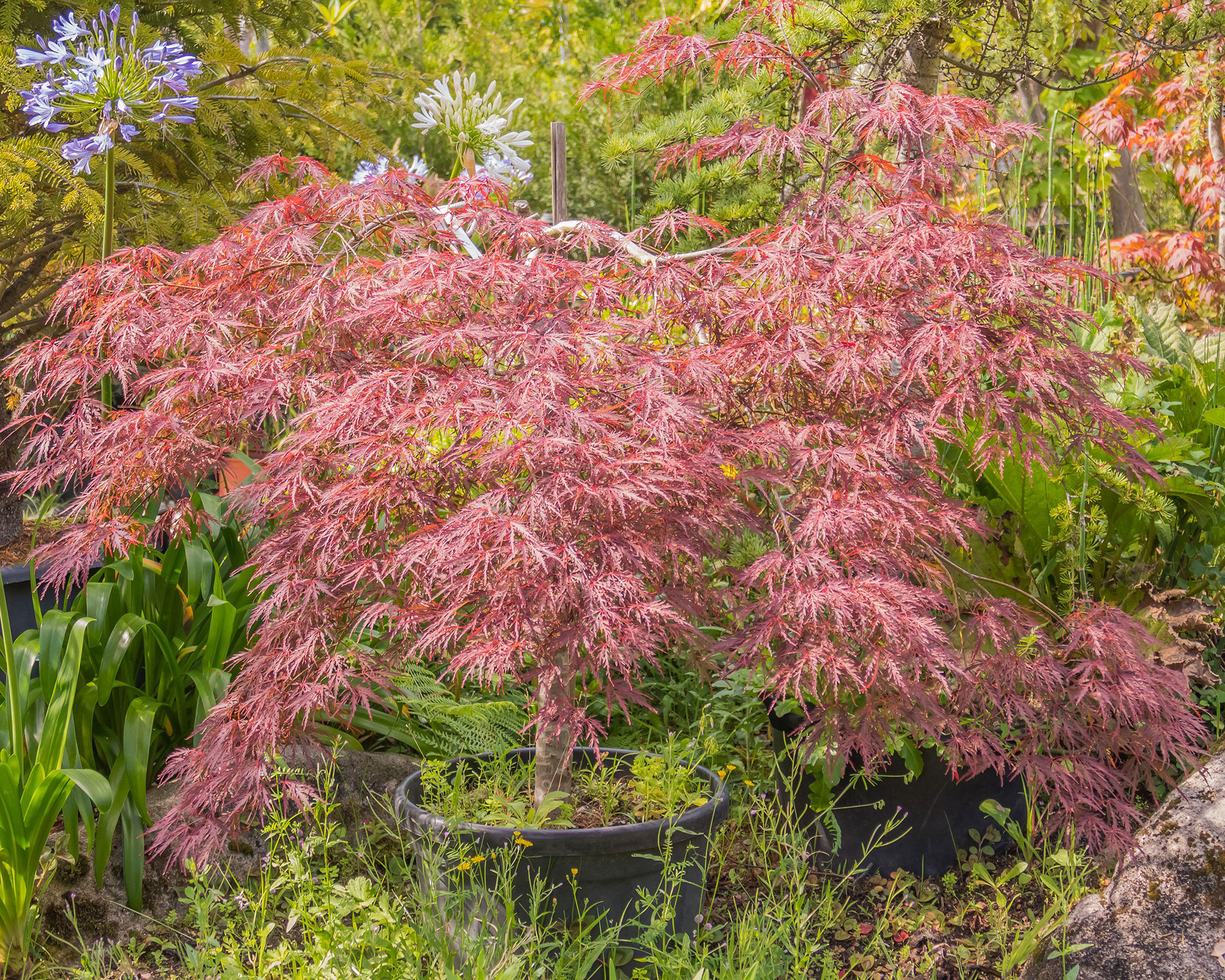
What are the best types of Japanese maples for shaded areas?
If you're looking for the best trees for shade, garden designer David Chanell of Arlo and Bloom shares his favorite varieties for shadier areas of the garden.
'I would choose ‘Sango-kaku’ for its vivid pink winter stems, ‘Seiryu’ as the only upright dissectum variety and ‘Shishigashira’ for its tight and compact leaf form, but there are so many more to discover.'
Japanese maples grow best in dappled shade, but you can still use them in darker spaces. 'The noticeable differences is that the red varieties will adopt a slightly more green tinge, and while the dramatic fall colors may not be greatly affected, the vibrancy of their spring colour can be reduced,' says David.
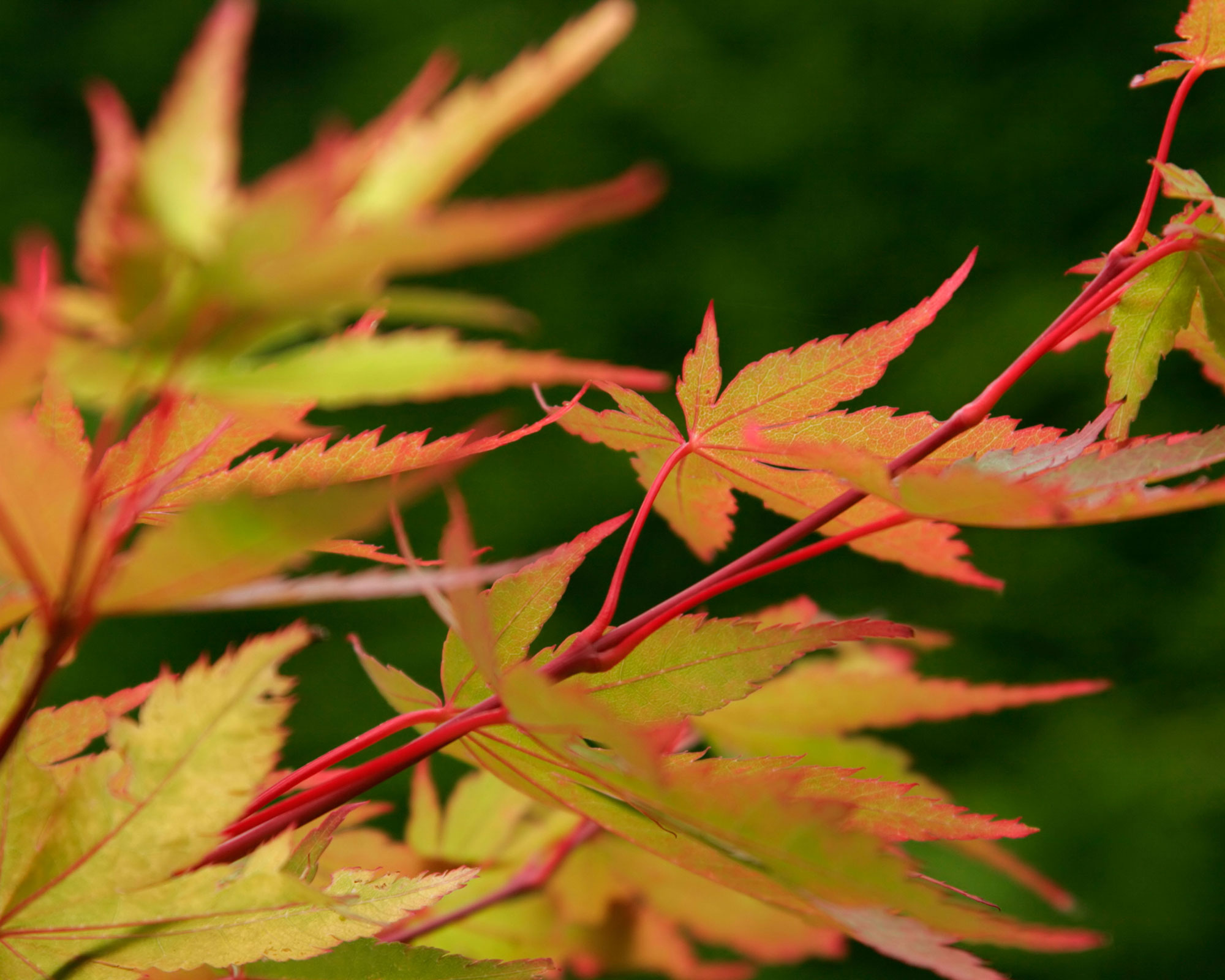
Is a Japanese maple a tree or a shrub?
The answer is both. Japanese maples, or acers as they are also known, can be either deciduous trees or shrubs. Check the shape and ultimate size and width of the plant carefully, especially if purchasing online, to ensure that you get the right fit for your garden.
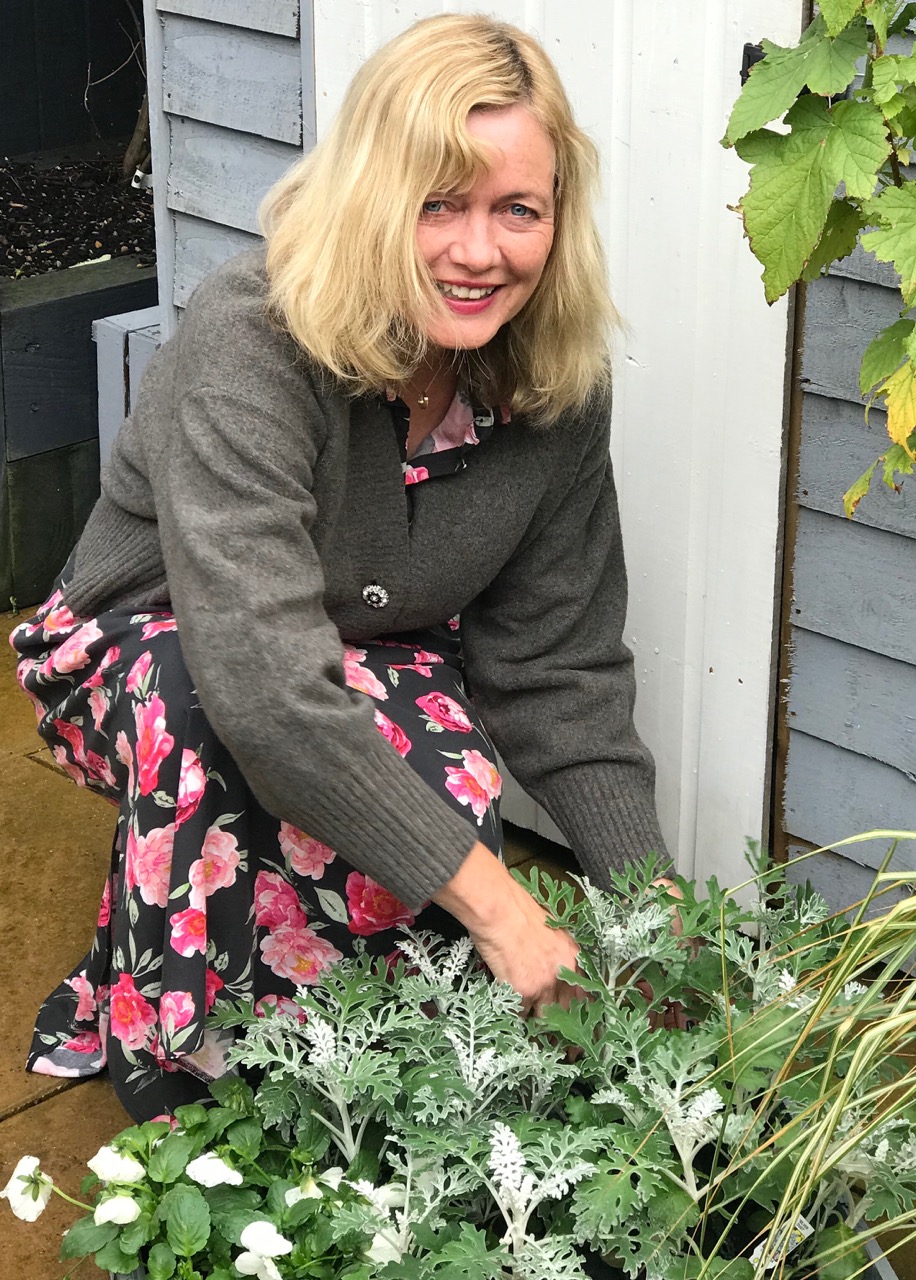
An experienced freelance journalist, editor and columnist writing for national magazines and websites, Fiona now specialises in gardens. She enjoys finding and writing about all kinds, from the tiniest town plots to impressively designed ones in grand country houses.
